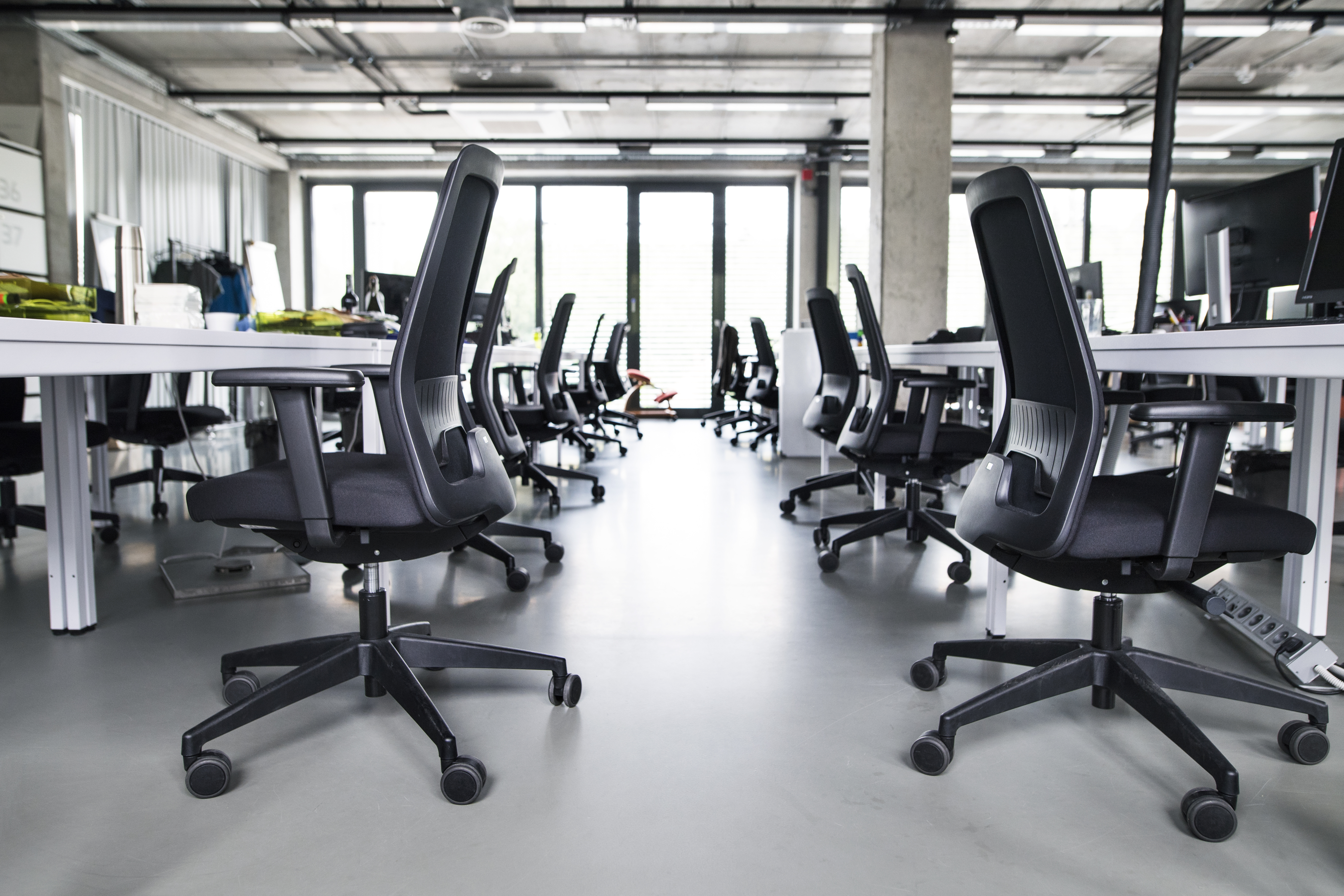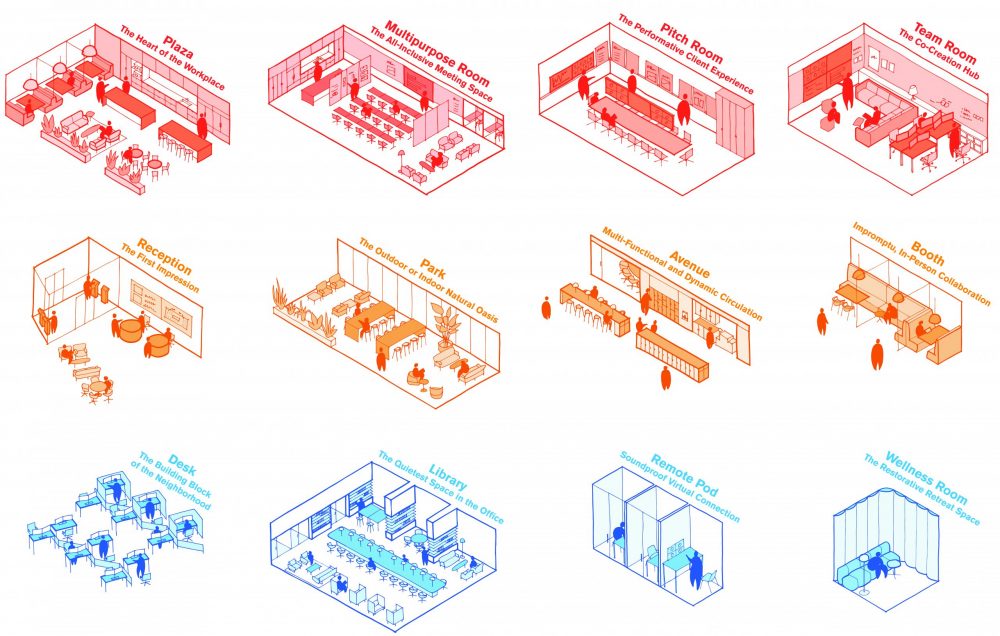Is the Open Office Concept Dead?
Karl Elhen
Aug 25, 2021 8:00:00 AM
The jury’s still out for the official verdict, but things aren’t looking great for the open office.
Many of the major architecture firms across the continent are putting in significant effort and research to anticipate what their clients are looking for as more employees head back to the office.
The open concept’s reputation as an effective solution for sociability and productivity has been rocky over the last decade, and many architecture and design professionals think the pandemic was the final push off the cliff.
In this blog post, we’ll examine the current state of the open-concept office, why it’s changing, and how architects and designers are improving it to create hybrid spaces that are better for workers.

How Do Open Offices Affect Workers?
In theory, open office spaces were meant to be the crowning glory of office design, offering infinite flexibility for collaboration so nothing—not even walls—would stop the flow of ideas, communication, and innovation.
In practice, the infinite collaboration came at the price of privacy. By and large, studies examining the communication-privacy trade-off have found that the benefits of easy (and potentially constant) communication don’t outweigh its disadvantages.
The common disadvantages of open concept offices for employees include:
A significant lack of privacy
- They feel monitored and distrusted by leadership
- The work area is noisier, making it harder to focus
- They get distracted more easily by coworkers
- It’s harder to create boundaries between collaborative and individual work
Most of the disadvantages come as a result of muddied intentions. For example, although open floor plans were meant to increase collaboration and help employees interact with each other, they quickly became a solution for reducing overhead and monitoring employee activity (productivity).
The Evolution of the Open Office Floor Plan
So if the open office plan didn’t work, what’s the solution? What comes next?
As with most changes in the working world post-pandemic, it looks like hybrids are the way forward.
Not only have hybrid work arrangements (i.e., a mix of in-office and remote work) propelled to the peak of popularity with many businesses, but hybrid workspaces seem to be following suit as the new standard.
In an interview with Business Insider, Tracy Brower, a sociologist and principal in the Applied Research + Consulting Group at Steelcase, said she doesn’t believe the open office is 100% dead—it’ll just be different than what it was before the pandemic. In the early aughts, office design swung headlong into open concepts with high employee density, and it’s swinging back the other way to spaces with more barriers and boundaries.
The idea of creating dedicated spaces in one suite or building for collaboration, individual work, and socializing is not new, but the idea of flexibility in all aspects of work has been trending since late 2020.
3 New Features of the Hybrid Office Plan
Associates Amber Wernick and Caroline Morris of Clive Wilkinson architects have spent much of 2020 and 2021 surveying clients and researching design trends to develop various workplace models for different types of office spaces most employers will need going forward.

Image by Clive Wilkinson architects
As we move away from the one-size-fits-all approach to completing our work, it makes sense that the environment in which that work takes place should be unique as well. These 12 models created by CWa address various concerns and needs employees have in any office environment.
1. Collaboration Space and Noise Control
Open concepts aren’t all bad. The idea of wide-open collaborative space is excellent for agile environments where people can pick up an idea and run with it with their peers—but designers need to make some considerations about the noise.
Unassigned seating areas with large working tables separated from individual nooks and comfortable areas for quiet focus are two staples of a hybrid space with boundaries. The boundaries, which you can create with modular furniture, partitions, or demountable walls, can accommodate multiple working styles or individuals in different stages of a project.
2. Social Space
An area of remote work that’s significantly lacking is its social possibilities. After 18+ months of Zoom meetings, virtual game nights, and an unprecedented increase in Slack bombing, office workers are ready to see people in real life again.
With an increased desire for sociability, office designs need to accommodate these types of areas.
Humans are particularly social around their food, so water-cooler talk has easily evolved into coffee talk and then lunchroom banter. In keeping with this trend, many designs will feature kitchen/lunchroom areas with comfortable social seating to create socially active spaces.
This trend also moves away from the tradition of large corporate offices having multiple smaller kitchenettes where workers could quickly grab the sustenance they needed before getting back to work. It also brings people who might not normally interact together because the convenience of popping to the lunchroom for a quick bite is gone.
3. Rethinking Walkways
Also playing off some of the missing social aspects of remote work, there’s an emerging trend of reconfiguring office hallways into flexible workspaces.
By widening and livening up a walkway with breakout spaces, individual seating, and bar spaces, unprompted interactions can occur almost anywhere without being incredibly intrusive. It can also act as a place to decompress or debrief after a long meeting. Coworkers can grab a coffee and sit down at a booth or bar area to compare notes, and other people can head back to their individual work area while putting in some face time on the way back.
The Next Moves in Office Design
The pandemic has sparked deep reflections on how we live and work, and those reflections have accelerated some of our ideas for how our built environments will have to change.
Being forced inside and adapting to new working environments has inspired designers, employers, and workers to rethink what an office can and should be.
What else is changing in office design? Download the 2021 Design Guide to learn more.
